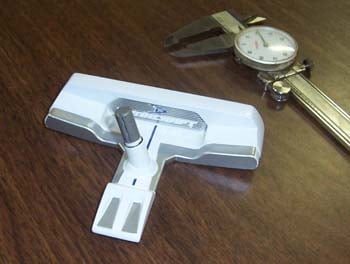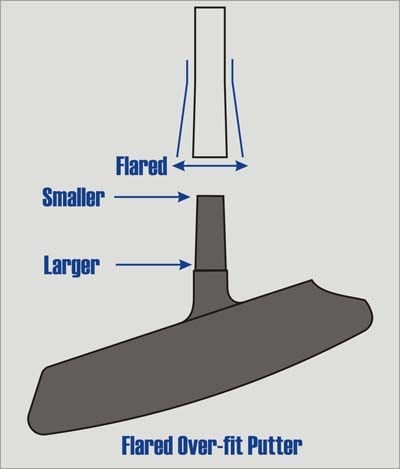Putter Shaft Terminology
One product category you here so very little about is the lowly putter shaft. Well if you are building or repairing putters there is more to know about them than you might think. Today, I want to go over some of the terminologies you may not have heard about or were even aware that existed.
![]()
Nearly all putters today are equipped with a steel shaft. One such exception are the UST Mamiya Frequency Filtered shafts which combine carbon fiber in the butt section to diffuse unwanted vibrations. Putter shafts of the past have also been made of wood, aluminum and graphite too. Some may be designed for conventional, belly and chest length putters and come either straight or with one or multiple bends to create a specific lie and/or offset. Thousands of putter shafts exist; many of which are proprietary to a single model or putter series such as in cases to make the club face balance.
The majority of putters on the market today require a 0.370” shaft, but as always there are exceptions – even a difference in 0.370” shafts.
Controlled I.D. putter shafts
The Controlled I.D. shaft category was designed to fit putters with a post, stem, tang, spud or whatever you want to call it that would normally take a 0.370” parallel tip shaft. When you normally order a 0.370” shaft, the manufacturer is only concerned that the O.D. or outside diameter be 0.370”. But due to weight and tolerances, the I.D. or inside diameter of the shaft can vary.
If you do enough assembly of over-the-hosel putters, you will find in some cases a normal 0.370” shaft fits and many other times it doesn’t and requires you to either sand the stem or shim the stem so the shaft is nice and tight. With the Controlled I.D. shaft, this eliminates the tolerances to make the assembly process more efficient. Manufacturers such as True Temper have made multiple controlled ID shafts with slightly different I.D.to fit various OEM putters.
For your reference, Hireko putter models designed for an over-fit assembly have a 0.320” stem with a couple thousands of an inch clearance for epoxy. But if you have one to re-shaft a model by another manufacturer, it is best to measure the stem carefully with your calipers.
Flared Tip putter shafts
Flare tipped shafts fall under the same umbrella as Controlled I.D. shaft in that they are designed to fit over a post or stem. The difference is the diameters. As the name implies, the shaft flares out (think of bell-bottomed pants). The inside diameter nearest the tip measures 0.382” whereas the outside diameter is in the range of 0.422”. Being flared, the shaft would fit snug when forced over the tapered post. The flare tip putter shaft is not commonplace but clubmakers and club technicians need to be aware of them.
The flare tip putter shaft is not commonplace but clubmakers and club technicians need to be aware of them.
Taper Tip putter shafts
Certain major manufacturer’s iron and hybrid club heads aren’t the only category that requires 0.355” taper tip putter shafts, but select putters as well. Among them are current models from Ping and Scotty Cameron as well as classic putters. The 0.355” taper tip shaft is the opposite of the flared tip but does essentially the same thing. In this case the taper tip is force fit into the tapered bored to possess a mechanical lock in addition to the epoxy bond.
